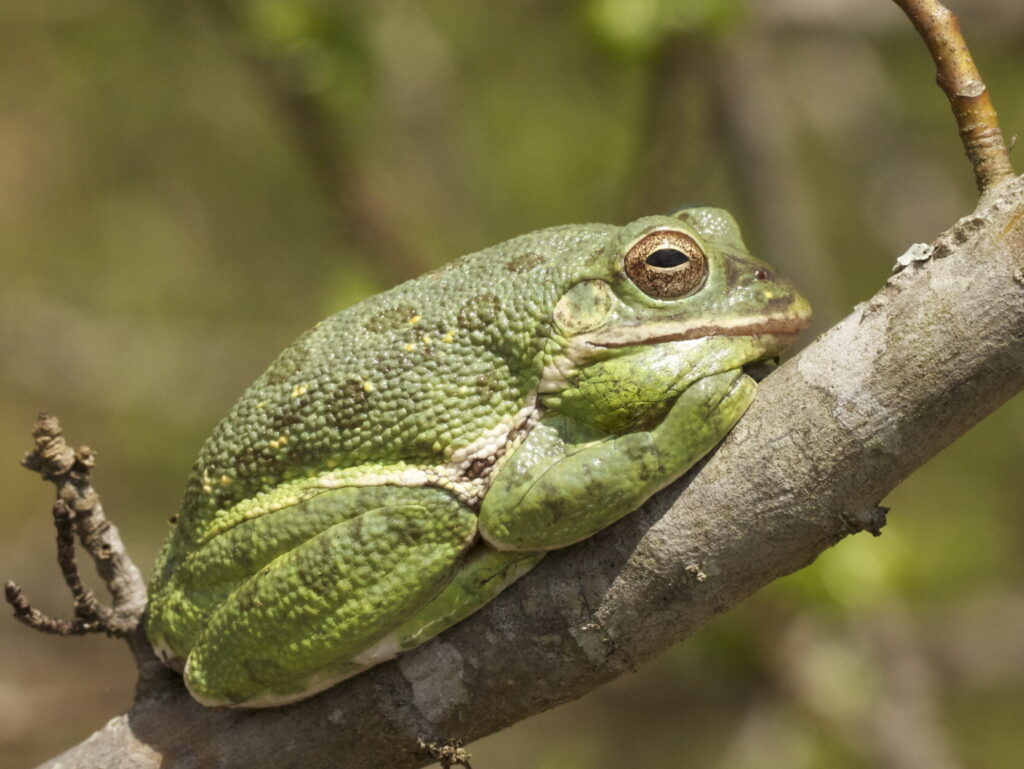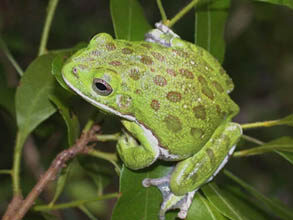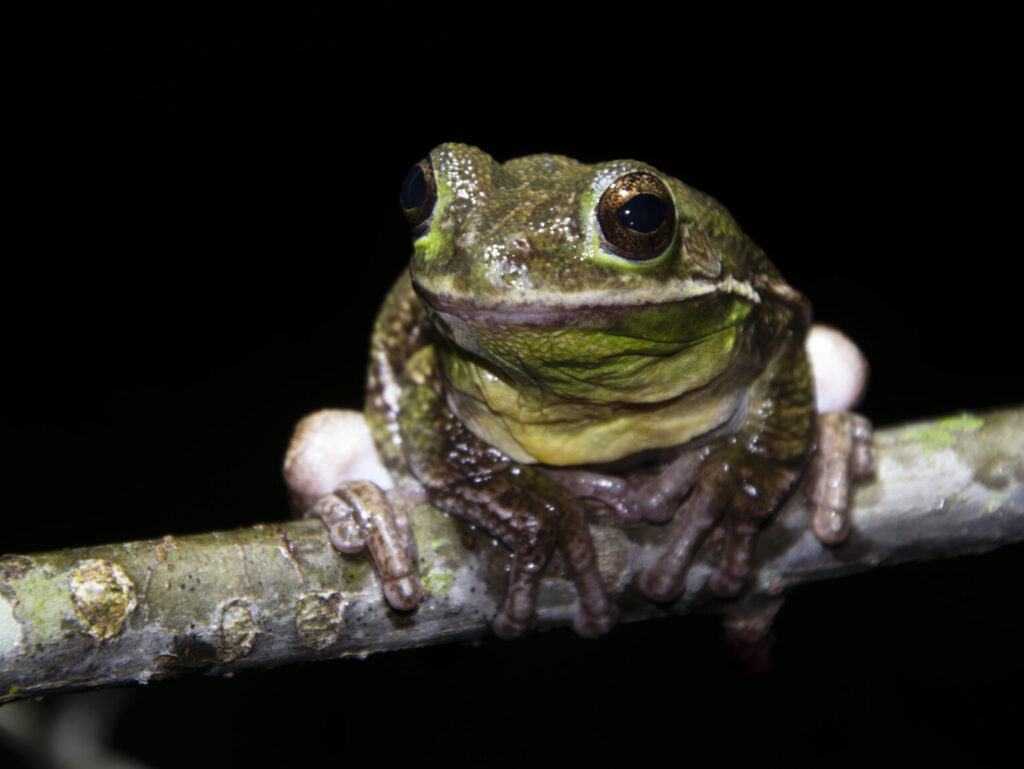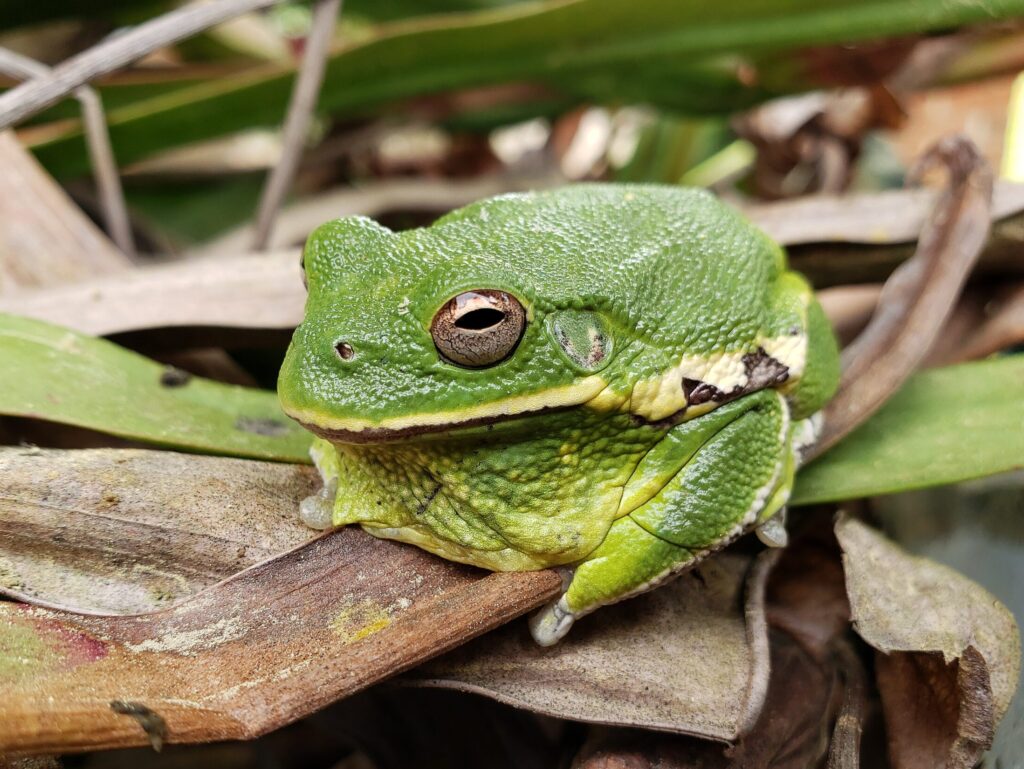Barking Treefrog (Hyla gratiosa)
Barking Treefrog (Hyla gratiosa)



Barking Treefrog Call
Description: Barking Treefrogs are the largest treefrogs in our region, averaging over 2 in (4.4 cm) in length. They are heavier-bodied and have more granular skin than green or squirrel Treefrogs, with which they can be confused. They are often bright green in coloration and usually have dark, round spots on their back and a white line on lip that continues down each side.
Range and Habitat: Barking tree frogs are found throughout the Coastal Plain of the Southeast, including all of southern and eastern South Carolina and Georgia. They are found in a variety of wooded habitats but require fishless wetlands to breed. The largest breeding populations occur around shallow, heavily vegetated wetlands such as Carolina Bays.
Description: The largest treefrog in the Southeast, averaging over 4.4 cm (2 in) in length. Heavier-bodied with coarser, more granular skin than Green (D. cinereus) or Squirrel Treefrogs (D. squirellus), which it may resemble. Typically, bright green, though color may vary, with distinct dark round dorsal spots and a pale line along the upper lip that often continues down each side of the body.
Range and Habitat: It occurs throughout the Coastal Plain of the southeastern United States, including all of southern and eastern South Carolina and Georgia. It inhabits various wooded habitats, but requires fishless wetlands for breeding. Large breeding populations are often associated with shallow, vegetated wetlands such as Carolina Bays.
Habits: They spend most of the year high in trees, descending during the breeding season. Breeding occurs from March to August, with peak calling activity in early summer. Males typically call while floating on the water surface, their inflated bodies resembling “tennis balls” from a distance.
Call: A resonant, explosive “donk” or “tonk” given at 1–2 second intervals. Large choruses sound like barking dogs, giving the species its common name.
Conservation Status:
Less common than Green and Squirrel Treefrogs, but not protected in the Southeast. Still locally abundant in suitable habitats, though reliant on the availability of intact, fishless wetlands.



